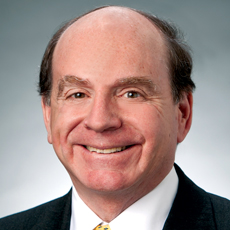
The Comprehensive Care for Joint Replacement Program commenced on April 1, 2016 and requires participation of approximately 800 hospitals in 67 Metropolitan Statistical Areas. The five-year CJR Program is the first alternative patient program where participation is mandatory for the affected hospitals.
The CJR Program applies to MS-DRG 469 (major joint replacement or reattachment of lower extremity with major complications or comorbidities) and MS-DRG 470 (major joint replacement or reattachment of lower extremity without major complications or comorbidities) and covers all Medicare Part A and Part B services during a defined episode involving such procedures. In addition, in a proposed rule that has yet to be finalized issued July 25, 2016, CMS has also proposed the expansion of the CJR Program to include MS-DRGs 480-482 for surgical hip/femur fracture treatment. The episode starts with the hospitalization for the procedure in the hospital and continues through the date 90 days after discharge from the hospital, with few exceptions. As such, Medicare services provided by long-term care providers in the 90 days after the discharge are included in the episode.
The CJR Program applies a bundled-payment type of approach. Under the CJR an episode target price is established for each procedure including the hospitalization, physician services, ancillary services, post-acute care, DME, Part B drugs, therapies and more. The episode target price is established annually as a blend of hospital specific costs and regional costs, but by the fourth year of the five-year program, the episode cost is based completely on regional costs.
Each provider performing services during the episode bills the Medicare program on a fee-for-service basis. All the Part A and Part B services are aggregated and measured against the episode target price. If the total episode Medicare services come in below the episode target price, after a 3% discount to the Medicare program, a “gainsharing payment” is made. If the total Medicare services come in above the episode target price, after the 3% discount to the Medicare program, the hospital is required (for episodes commencing after January 1, 2017) to repay the overage. Hospitals must have a minimum quality score on defined criteria for eligibility for gainsharing payments. The gainsharing and loss-sharing are subject to caps that are phased in over the five-year term of the CJR Program.
As suggested above, the hospital is at the core of the CJR. Absent agreements with collaborators, the anchor hospital is solely responsible for the financial consequences during the episode, even though much of the care is provided by others.
Anchor hospitals may enter into Collaborator Agreements with other providers who furnish services during the episode to share the upside and/or the downside. Such Collaborator Agreements are subject to a number of detailed requirements.
Among the requirements are that the anchor hospital must select those providers with whom it enters Collaborator Agreements based on written criteria that are based on quality standards and not volume or value, and quality scoring is part of any gainsharing payment. The collaborators must engage with the hospital in care redesign strategies and, furnish services during an episode to be eligible for gainsharing payments. The hospital may assign various percentages for gainsharing (which includes payments from CMS if costs are below the target plus identified and objective cost-savings from care redesign) or loss-sharing to a collaborator, subject to certain limits. The hospital must retain 50% of the downside risk and may not have one collaborator be responsible for more than 25% of the downside. Also, no physician collaborator may receive a gainshare that is more than 50% of the total physician fee-for-service charges during the episode.
Program waivers
The CJR Program also contains certain Medicare programmatic waivers. They include:
-
A waiver of the SNF 3-day rule for coverage of a SNF stay following the hospitalization, beginning January 1, 2017. The waiver requires that the beneficiary be transferred to a SNF which has a 3-star or higher rating for at least seven of the previous 12 months on the CMS Nursing Home Compare website.
-
A waiver for the “incident to” direct supervision rule for physician services. Such waiver allows non-physician practitioners to furnish a visit in the beneficiary’s home under the general supervision of a physician. This waiver only applies to beneficiaries who do not qualify for Medicare coverage of home health services and the visits are limited to nine visits during the episode.
The CJR Regulations also allow for a post-acute provider to be designated as a preferred provider. The hospital must provide a list of all available post-acute providers and no steerage may override a beneficiary or beneficiary’s family members’ desire for a particular post-acute provider.
Fraud and abuse waivers
CMS and OIG also published fraud and abuse waivers for the CJR Program. The three CJR fraud and abuse waivers are:
-
Waiver for distribution for gainsharing payments under Collaborator Agreements
-
Waiver for distribution payments from a physician group practice to a practice collaborator agent
-
Waiver for patient engagement incentives provided by anchor hospitals to Medicare beneficiaries in episodes (“Patient Engagement Waiver”)
The first two waivers require entry into a Collaborator Agreement to make the payments protected and the waivers also have a number of criteria that must be satisfied. Any entity entering a Collaborator Agreement and receiving a gainsharing payment would be well-advised to seek legal counsel and be sure the protection of the fraud and abuse waiver is perfected. Unlike the fraud and abuse waivers for the Medicare Shared Savings Program, infrastructure and start-up payments are not protected under the CJR Waivers.
The Patient Engagement Waiver protects certain in-kind consideration provided by a hospital to a beneficiary during the episode. The consideration must meet other criteria specified that are intended to ensure beneficiary engagement and adherence to the care plan.
Opportunities for long-term care providers
Long-term care providers in MSAs covered by the CJR Program have a number of opportunities to assist hospitals. As described above, the CJR Program makes the hospital responsible for performance and cost of the episode. A long-term care provider who can work with the hospital to help reduce Medicare episode costs in that 90-day post-discharge period can be very valuable to the hospital.
Long-term care providers should know which hospitals participate in CJR and identify which hospitals have or are likely to have higher episode costs. Over time the regional episode cost averages will drive the cost benchmarks. As such, hospitals with episode costs in excess of the regional average will need to find solutions or face owing money back to CMS.
Understanding the component costs of a typical CJR episode will also be important. It has been suggested that of the typical episode cost for major joint replacement is on the order of $29,400. Of that cost, approximately 44% is spent on the hospitalization itself, with around 15% spent on physicians and other Part B services. Approximately another 33% is spent on SNFs, home health agencies, IRFs and LTACHs. The cost of readmissions adds another 4%.
Hospitals have been paid for the hospitalization under DRGs for some time, so one would expect the cost-saving opportunities involved in the hospitalization have been significantly addressed. There no doubt are opportunities to work with physicians to realize some efficiencies given the ability to enter care redesign strategies and embed them in Collaborator Agreements.
The post-acute area, however, is viewed by most as the leading opportunity to find cost savings and efficiencies. Long-term care providers who develop plans to efficiently treat CJR patients, reducing expensive readmissions and post-discharge care while also meeting quality standards, will be very valuable to hospitals. Hospitals should have reasons to enter into Collaborator Agreements with prepared and creative long-term care providers, sharing recognized gains with the long-term care providers. Such hospitals may well be convinced to designate such entities as preferred post-acute providers.
Examples of steps that long-term care providers might take to position themselves as preferred providers and gainsharing partners might include:
- Demonstrating comparative superiority to competitors on various quality metrics such as readmit rates and patient surveys
- Developing specific CJR orthopedic wings in their facilities
- Suggesting care redesign protocols to facilitate quicker functional patient recovery and discharge to home setting
- Willingness to share in downside and upside
- Ability to work across the continuum
- Willingness to invest in infrastructure (or that suggested by a CJR hospital) to track the care status and health status in real time of each CJR patient.
Long-term care providers also should appreciate that episode cost programs like the CJR are apt to become more and more common. CMS has already adopted a similar program for certain cardiac procedures and may further expand such programs.
Moreover, respected commentators, have supported alternative payment models that utilize bundled payment arrangements like CJR. Long-term care providers are well advised to focus on the CJR and determine how they can assist hospitals in achieving success.
 C. Frederick Geilfuss II is a partner and healthcare lawyer with Foley & Lardner LLP.
C. Frederick Geilfuss II is a partner and healthcare lawyer with Foley & Lardner LLP.
 Christopher J. Donovan is a partner with Foley & Lardner LLP.
Christopher J. Donovan is a partner with Foley & Lardner LLP.
 Alexis Bortniker is a senior counsel and healthcare lawyer with Foley & Lardner LLP.
Alexis Bortniker is a senior counsel and healthcare lawyer with Foley & Lardner LLP.



